Full programme

Monday 17 April 2023
Workshops
Tuesday 18 April 2023
08:15Registration
09:00
Plenary talk
Jean-Pierre Birat
IF Steelman, France Net-Zero steel production: what will become of slag and of its valorisation?09:40
Plenary talk
Graham Nathan
Centre for Energy Technology, School of Mechanical Engineering, University of Adelaide, Australia New opportunities for the circular economy arising from emerging high temperature net-zero processing pathways10:20
Coffee break
10:50
Parallel session
Environmental and leaching aspects of slag valorisation
-
10:50
Konstantina Koukouza
KU Leuven Solidification of Fe-rich slags and the impact on leaching -
11:10
Igor Babaian
Pyrometallurgy Innovation Centre Characterisation of Slag Leachability by Experimental and Thermodynamic Modeling Studies in Support of Slag Recycling -
11:30
Vojtech Ettler
Charles University, Faculty of Science Gallium and germanium in metallurgical slags: mineralogy, extraction and potential recovery
10:50
Parallel session
Alkali activation
-
10:50
Nana Wen
KU Leuven Are Fe-rich alkali-activated materials resistant to sulfate salts? -
11:10
Thi Nhan Nguyen
Department of materials engineering, KU Leuven Permeability and sorptivity of alkali activated Fe-rich slag mortars -
11:30
Niels Hulsbosch
Belgian Building Research Institute (WTCB-CSTC-BBRI) Validation of secondary aggregate and alkali-activated concrete technologies available in Belgium. -
11:50
Alexander Wetzel
Department of Structural materials and Construction Chemistry High performance lightweight concrete based on alkali activated slag as aluminium casting mould
12:10
Social activity
Boat tour around Mechelen
12:30
Lunch break
14:00
Plenary talk
Valentina Colla
Center ICT for Complex Industrial Systems and Processes, Scuola Superiore Sant'Anna- TeCIP Institute, Italy The steel slag value chain: recent research and future perspectives14:40
Plenary talk
Dirk Durinck
McKinsey & Company, Belgium Global outlook on ferrous slags in the frame of the technology transition and its implication on slags15:20
Coffee break
15:50
Future steel slags
-
15:50
Andreas Ehrenberg
FEhS - Institut für Baustoff-Forschung e.V. The steel production transformation process - Consequences for the slag utilization -
16:10
Gert Bolte
HeidelbergCement AG Synergies of steel and cement industry: How to replace declining GBFS quantities by scrap based, engineered EAF-slag -
16:30
Tandré Oey
VTT Teknologian Tutkimuskeskus Oy Influence of composition and cooling rate on the reactivity and performance of novel steel slags as cement replacements
16:50
Poster and sponsor pitches
-
Somnath Basu
Metallurgical Engineering & Materials Science Department, Indian Institute of Technology Influence of metal ion leaching on remediation of arsenic-contaminated water using -
Glenn Beersaerts
KU Leuven The optimum fineness of an Fe-rich slag as a precursor for castable alkali-activated mortars -
Glenn Beersaerts
KU Leuven Modifying the CaO, Al2O3, MgO and amorphous content from an industrial slag to investigate its effect on the reactivity for alkali-activated materials -
Danting Chen
University College London Characterisation of Zn and Pb in Pb/Zn smelter slags including results from X-ray absorption spectroscopy -
Rania Derouiche
Vrije Universiteit Brussel Effect of retarders on the properties of copper slag based phosphate cementitious materials -
Isabella Lancellotti
Department of Engineering ‘Enzo Ferrari’, University of Modena and Reggio Emilia Alkali Activation of Metallurgical Slags: Reactivity in NaOH solution -
Guillermo Meza Hernandez
Vrije Universiteit Brussel Influence of the curing conditions on the mechanical properties of alkali activated copper slag-basalt based thin composites. -
Arne Peys
VITO ENICON matrix valorisation: towards near-zero waste in Europe’s Ni/Co supply chain -
Yufeng Tian
The State Key Laboratory of Refractories and Metallurgy, Wuhan University of Science and Technology Thermodynamics and kinetics of hot state modification of BOF slag by adding SiO2 -
Ladji Tikana
International Copper Association The environmental and economic opportunities from using iron silicate in construction -
Jorn Van De Sande
Vrije Universiteit Brussel Influence of MgO on the thermal stability of Fe-rich alkali-activated materials
17:15
Reception
Wednesday 19 April 2023
08:40Parallel session
Valorisation of steel slags I
SVS-ISIJ Joint session
-
08:40
Klaus Doschek-Held
Montanuniversitaet Leoben Recycling of metallurgical residues by chemical modification, carbothermic reduction and phase modification -
09:00
Karen Miya
Advanced Technology Research Laboratories, Nippon Steel Corporation Creating blue carbon ecosystem using steelmaking slag fertilizers for marine and acquisition of blue carbon credits -
09:20
Jonathan Zepper
Eindhoven University of Technology Quality Assurance of Processed BOF slag: A case study -
09:40
Nobumitsu Hirai
National Institute of Technology (KOSEN), Suzuka College Biofilm formed on steelmaking slag in seawater environment -
10:00
Yao-Hung Tseng
New Materials Research and Development Department, China Steel Corporation The study of molten BOF slag modification and stabilization technology by oxygen blowing treatment
09:00
Parallel session
Cements/pozzolanic/binders I
-
09:00
Leif Hunsbedt
Eramet Norway AS Silica Green Stone – a new pozzolanic material -
09:20
Samantha Yvars
Eindhoven University of Technology Influence of limestone filler on the reactivity of C2S in a Basic Oxygen Furnace slag activated binder -
09:40
Marcel Laabs
University of Kassel Simultaneous utilization of municipal solid waste incineration ash/slag as binder and aggregate substitute
10:20
Coffee break
10:50
Parallel session
Valorisation of steel slags II
SVS-ISIJ Joint session
-
10:50
Eetu-Pekka Heikkinen
University of Oulu Influence of slag basicity and cooling rate on the structure of EAF steelmaking slags -
11:10
Kentaro Maeda
Kobe Steel Improvement of steam aging of steelmaking slag by forming highly permeable layer in slag bed -
11:30
Anthony de Schutter
KU Leuven Enhancing the carbonation of industrial steel slags through concurrent wet milling -
11:50
Takeru Hoshino
JFE Steel Corporation Properties of Iron and Steel Slag Cast Matrix as an Alternative to Iron and Steel Slag Hydrated Matrix -
12:10
Ritesh Kumar
Tata Steel Limited Sustainable use of Steel Slag in National Highways
10:50
Parallel session
Bauxite residue
-
10:50
Hamada Elsayed
University of Padova, Dept. of Industrial Engineering Engineering of mixtures of inorganic waste for sustainable structural and functional materials -
11:10
Fábio Oliveira
KU Leuven Processing Parameters and Their Impact on BR-based Autoclaved Dense Monoliths -
11:30
Rui Novais
University of Aveiro Red mud-based geopolymer spherical aggregates: novel strategy to produce lightweight materials -
11:50
Ganesh Pilla
Ku Leuven Recovery of Fe, Al, and Na during the low-temperature reduction of bauxite residue with varying contents of H2
12:30
Lunch break
14:00
Plenary talk
Nele De Belie
Magnel-Vandepitte Laboratory for Structural Engineering and Building Materials, Ghent University, Belgium Valorisation of iron-rich non-ferrous metallurgy slag in concrete and effects on durability14:40
Plenary talk
Christina Meskers
SINTEF The big picture: Slag valorisation within circular, net-zero and sustainability paradigms15:20
Coffee break
15:50
Parallel session
Characterisation and modelling for slag valorisation
-
15:50
Joao Rezende
GTT Technologies State-of-the-art thermochemical and thermophysical modelling of slags -
16:10
Evgueni Jak
Pyrometallurgy Innovation Centre Integrated Experimental Phase Equilibria and Thermodynamic Modelling Research and Implementation for Sustainable Materials Processing and Recycling -
16:30
Rob Dekkers
ROCKWOOL Screening of reclaimed mineral wool by using handheld XRF spectrometer -
16:50
Ziyou Yu
KU Leuven Challenges and opportunities from NMR characterization of alkali-activated materials
15:50
Parallel session
Valorisation of copper slags
-
15:50
Zhongfu Cheng
KU Leuven Computational fluid dynamics study on the flow and splashing in the plasma fuming process -
16:10
Gunnar Hovestadt
IME RWTH Aachen Fuming process of slags by hydrogen injection -
16:30
Zhongfu Cheng
KU Leuven Computational fluid dynamics simulation of hydrogen conversion in the reduction of copper slag
18:30
Conference dinner
22:30
Pub visit
Thursday 20 April 2023
08:40Parallel session
Phosphorus extraction and recovery from slags and other residues I
SVS-ISIJ Joint session
-
08:40
Hiroyuki Matsuura
Graduate School of Engineering, The University of Tokyo Recent scientific and technological research activities for the valorisation of ferrous pyrometallurgical slag in Japan -
09:00
Takayuki Iwama
Tohoku University Separation of Phosphorus from Steelmaking Slag by Selective Leaching -
09:20
Shohei Koizumi
Advanced Technology Research Laboratories, Nippon Steel Corporation Steelmaking Slag for Fertilizer Usage -
09:40
Yu-ichi Uchida
Nippon Institute of Technology Phenomenological Study on Separation Behaviour of Phosphate-concentrated Phase in Oxide Melt for Phosphorus Recovery from Dephosphorization Slag -
10:00
Sander Arnout
InsPyro FlashPhos: recovery of elemental phosphorus and synthesis of latent-hydraulic slag from sewage sludge
08:40
Parallel session
Metal and Li recovery from slags and other residues
-
08:40
Marko Ranneberg
BGR-Geozentrum Hannover Evaluation of Li and Mn influence on Al-Ca-Si-O slag system regarding pyrometallurgical LIBs treatment -
09:00
Christin Stallmeister
IME Process Metallurgy and Metal Recycling, Insitute of RWTH Aachen University, Intzestraße 3, 52056 Aachen, Germany Slag Design for Pyrometallurgical Metal Recycling and Targeted Lithium Slagging from Lithium-Ion Batteries -
09:20
Christian Dertmann
IME - RWTH Aachen University Novel Approach for Hydrometallurgical Nb/Ta Recovery from Tin Slags -
09:40
Joao Weiss
IME RWTH Aachen Assessing the crystallization and segregation of Ta-rich mineral phases in WEEE pyrometallurgical recycling -
10:00
Rensheng Chu
Shougang Group Co., LTD. Research Institute of Technology Fundamental research on recovering metal from hot-dip Zn-Al-Mg dross by supergravity separation
10:20
Coffee break
10:50
Parallel session
Phosphorus extraction and recovery from slags and other residues II
SVS-ISIJ Joint session
-
10:50
Masanori Suzuki
Graduate School of Engineering, Osaka University Trial of Phosphorus Extraction from Steelmaking Slag as Hydroxyapatite Precipitate by One-pot Hydrothermal Reaction -
11:10
Christoph Gatschlhofer
Montanuniversität Leoben, Austria Influence of iron, chromium, and manganese on the behaviour of phosphorus during carbo thermal reduction of synthetically produced slag-samples in a graphite bed
11:30
Panel discussion
10:50
Parallel session
Cements/pozzolanic/binders II
-
10:50
Judit Kaknics
ArcelorMittal Global R&D New Activation Routes for Early Strength Development of Granulated Blast Furnace Slag -
11:10
Debadri Som
KU Leuven Screening strategy for Fe-rich slag-based mortars -
11:30
Simon Blotevogel
Ecocem Materials / LMDC, LabCom Orison Detailed mineralogical characterization and first tests of cementitious reactivity of an electric arc furnace slag -
11:50
Irmtraud Marschall
K1-MET GmbH and Montanuniversitaet Leoben Characterization of ladle slag with regard to its use as a substitute for blast furnace slag in cements
12:30
Lunch break
14:00
Closing session
14:40
Closing reception
Plenary speakers
Christina Meskers
Department of Industrial Eco-systems, SINTEF Manufacturing, Trondheim, Norway
Christina Meskers, (Dr.ir.) is senior research scientist in the department of Industrial Eco-systems at SINTEF Manufacturing in Trondheim, Norway. Previously, she was senior advisor in the Industrial Ecology department at NTNU, and senior manager open innovation and senior manager market intelligence & business research at Umicore. She graduated from Delft University of Technology with an M.Sc. (2004) in resource engineering and a Ph.D. (2008) in materials science and engineering.
Christina has a passion for innovation and strategy, connecting people and ideas across disciplines, industries, organisations and value chains. Her work focuses on the contribution of metals and materials industry to the transition to sustainable products and a sustainable society.
She has over 15 years of experience in the (raw) materials sector, including co-authoring a United Nations’ International Resource Panel report on the opportunities and limitations of recycling (2013), editing the Handbook of Recycling (2023. Elsevier). She served on the advisory boards of international master programs, innovation networks, the Board of Directors of The Minerals, Metals and Materials Society (2020-2023), and is associate editor of the Journal of Sustainable Metallurgy.
Christina was awarded the 2020 Brimacombe Medalist and the TMS Young Leaders Professional Development Award (2008). Together with the Umicore colleagues: 2014 Ondernemers voor Ondernemers Award, and the 2013 Belgian Business Award for the Environment.
The big picture: Slag valorisation within circular, net-zero and sustainability paradigms
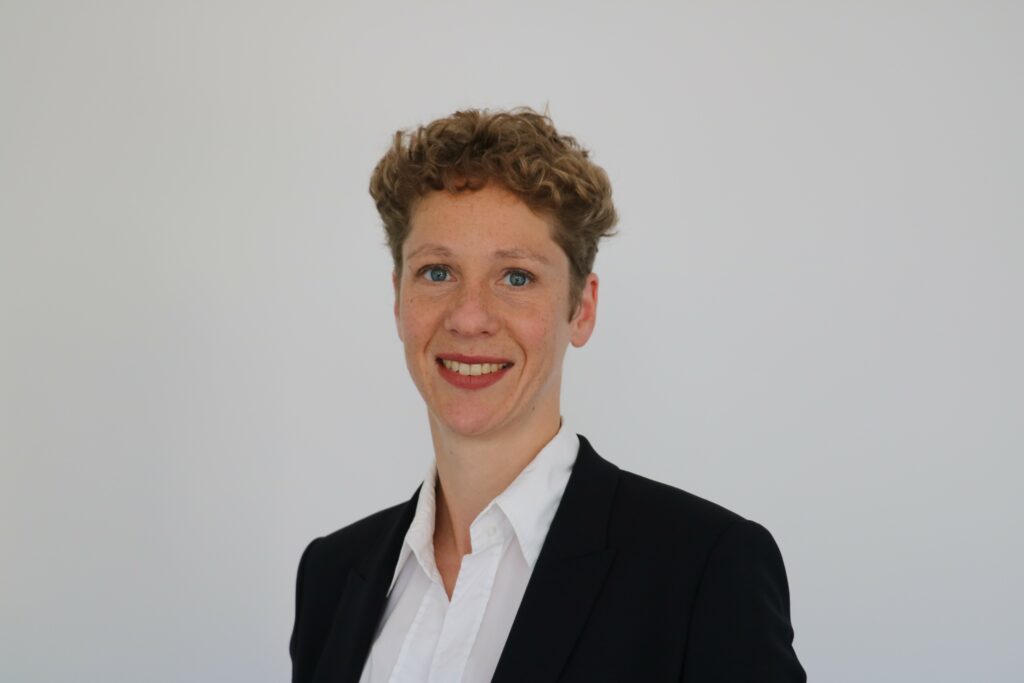
Jean-Pierre Birat
IF Steelman, France
Jean-Pierre Birat is an engineer, educated at Ecole des Mines, in Paris and then at the University of California in Berkeley. He worked for 42 years in the steel research center in Maizières-lès-Metz, known initially as IRSID and then as ArcelorMittal Research. Then he headed ESTEP, the European Steel Technology Platform, as Secretary General. He is now the owner and chief executive of IF Steelman, an SME consulting firm, which he created in 2013.
JP worked initially as a metallurgist and a process engineering researcher and then moved on to deal with environmental issues (climate change, etc.) and their social dimensions. He teaches as an Honorary Professor at the University of Science and Technogym in Beijing. He is the inventor of the Society and Materials Conferences, which have been running in Europe for the last 17 years with a worldwide attendance (SAM-17 planned for 9-10 May, 2023).
JP is collaborating with NTNU in Trondheim, sits on various advisory committees, is a foreign member of the Swedish Academy of Engineering Sciences, etc. He received several awards, including the Bessemer Gold Medal in 2003. He is the Editor in Chief of Matériaux et Techniques, an international Journal published in France.
Among more than 670 publications in Journals and conferences, here are some of the most recent ones:
- Birat, JP, The environment, from the standpoints of philosophy, social sciences and political activism, Matériaux et Techniques, vol. 107 (1) 2019
- Birat, JP, Sustainable Materials Science – Environmental Metallurgy, EDP Science, volume 1, 2020, 476 pages, and volume 2, 2021, 650 pages
- Birat, JP, Palimpsest and heterotopia, metaphors of the Circular Economy, Matériaux & Techniques 107, 505 (2019)
- Conejo, A.N, Birat, JP, Dutta, A, A review of the current environmental challenges of the steel industry and its value chain, Journal of Environmental Management, 250 (2020)
- J-P. Birat, Society, Materials, and the Environment: The Case of Steel, Metals 2020, 10, 331, 38 pages
- Gielen, D. Saygi, E. Taib, J-P. Birat, Renewables-based decarbonization and relocation of iron and steel making: A case study. J Ind Ecol. 2020;1–13
- Fabrice Patisson, Olivier Mirgaux, Jean-Pierre Birat, Hydrogen Steelmaking. Part 1: Physical Chemistry and Process Metallurgy, Matériaux et Techniques, 109 3-4 (2021) 3031
- Jean-Pierre Birat, Fabrice Patisson, Hydrogen Steelmaking, part 2: competition with other zero-carbon steelmaking solutions and geopolitical issues, Matériaux et Techniques, 109 (3-4 (2021) 307
- -P. Birat, La décarbonation de la filière sidérurgique : les enjeux du défi de l’ACIER VERT, Les annales des mines, Réalités industrielles, novembre 2022
- -P. Birat, Net-Zero transition in the steel sector: beyond the emphasis on hydrogen, did we miss anything? H2forGreenSteel Conference, organized by ESTEP, Paris, 29 November -1 December, 2022, keynote lecture
- Various contributions to Dictionnaire historique de la sidérurgie française, Presses Universitaires de Provence, September 2022
- -P. Birat, (3.3.1) Life Cycle Assessment and Related Methodologies, in Chapter 3: Environmental Aspects, in Treatise on Process Metallurgy, Second Edition, 2023
I added the few that were related to slag:
- -P. Birat, J.-M. Delbecq, E. Hess, D. Huin, Slag, steel and greenhouse gases, La revue de Métallurgie-CIT, Janvier 2002, 13-21
- Daniel Ravaine, Philippe Rocabois, Bernard Vialatte, Jean-Pierre Birat, Stainless steelmaking slag is a valuable by-product, 4th European Stainless Steel Science and Market Congress, June 10-13 2002, Paris
- Eric HESS, Claude GRISVARD, Jean-Pierre BIRAT, Jacques DEFAYS, Jean-Michel BONTE, Pierre RUSSE, Slag recycling within the steelworks: modeling of internal reprocessing routes, ICSTI, Düsseldorf, 2003
- -P. Birat, Steel and CO2 – the ULCOS Program, CCS and Mineral Carbonation using Steelmaking Slag, invited paper, 1st International Slag Valorisation Symposium, Leuven – 6 & 7 Apr 2009
Net-Zero steel production: what will become of slag and of its valorisation?

Valentina Colla
Center ICT for Complex Industrial Systems and Processes, Scuola Superiore Sant'Anna- TeCIP Institute, Italy
Valentina Colla received her Master Degree in Engineering in 1994 and her Ph.D. in Industrial and Information and Engineering in 1998. She started her research activity in the steel field at Scuola Superiore Sant’Anna (SSSA) in Pisa, Italy, in 1996 working on AI-supported material science and technology. From 2000 until 2008 she was a researcher at SSSA, where she established a research team working on applications of advanced digital technologies in process and manufacturing industry, with a focus on the steel sector.
Presently, she is the Assistant Professor of Metallurgy and responsible for the Research Center Information and Communication Technologies for Complex Industrial Systems and Processes (ICT-COISP) of the Telecommunications, Computer Engineering, and Photonics Institute (TeCIP) of SSSA. Her research activity concerns simulation, modelling, management and control of industrial processes via traditional and Artificial Intelligence (AI)-based techniques. She holds a considerable experience on development of investigations and solutions to improve energy and resource efficiency in the steel sector, including by-products characterization treatment and valorisation. She participated in 70 EU-funded projects (11 as project coordinator) and many projects funded by private companies. She is an active member of the European Steel Technology Platform (ESTEP), where she is a member of the focus groups entitled “Smart Factory” and “Circular Economy”. She is co-author of about 400 papers published in international journals and conferences.
The steel slag value chain: recent research and future perspectives
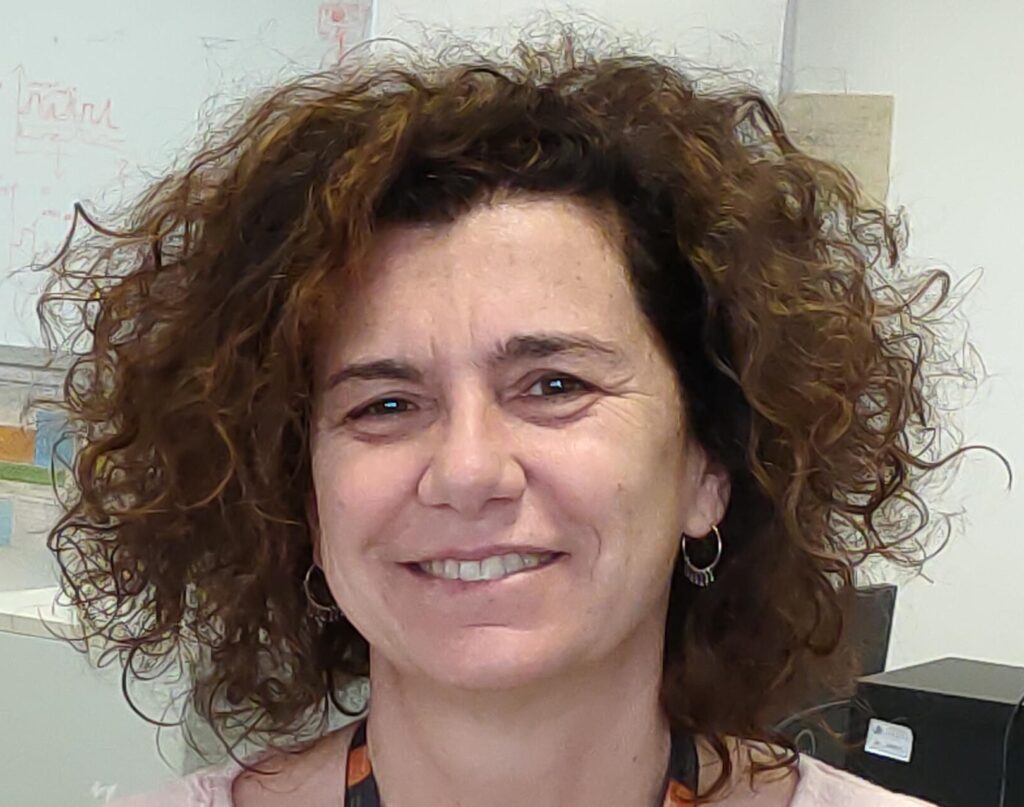
Nele De Belie
Magnel-Vandepitte Laboratory for Structural Engineering and Building Materials, Ghent University, Belgium
Nele De Belie is professor in Durability of Cement Bound Materials at Ghent University since 2000. Since 2018 she is director of the Magnel-Vandepitte Laboratory for Structural Engineering and Building Materials, with about 140 staff members. She is head of the “Concrete and Environment” research group with around 20 postdoc and Ph.D. researchers. Her research focuses on sustainable concrete with supplementary cementitious materials, concrete durability, biodeterioration, bioconsolidation, smart concrete with self-healing or self-cleaning properties, circular economy and life cycle assessment. She has supervised more than 60 (inter)national projects in these areas, has been vice chair of the recent COST action SARCOS and is coordinator of the European Marie Curie ITN SMARTINCS. She is vice president of RILEM, outgoing chair of the Technical Activities Committee (coordinating ~40 Technical Committees) and chair of TC 281-CCC on Carbonation of concrete with SCM (>100 members). She is author of > 300 WoS publications and 20 book chapters, editor of 10 books, inventor in 3 patent applications, editorial board member of 3 scientific journals. She is laureate of several awards in recognition of her scientific work, such as the Robert L’Hermite medal.
Valorisation of iron-rich non-ferrous metallurgy slag in concrete and effects on durability
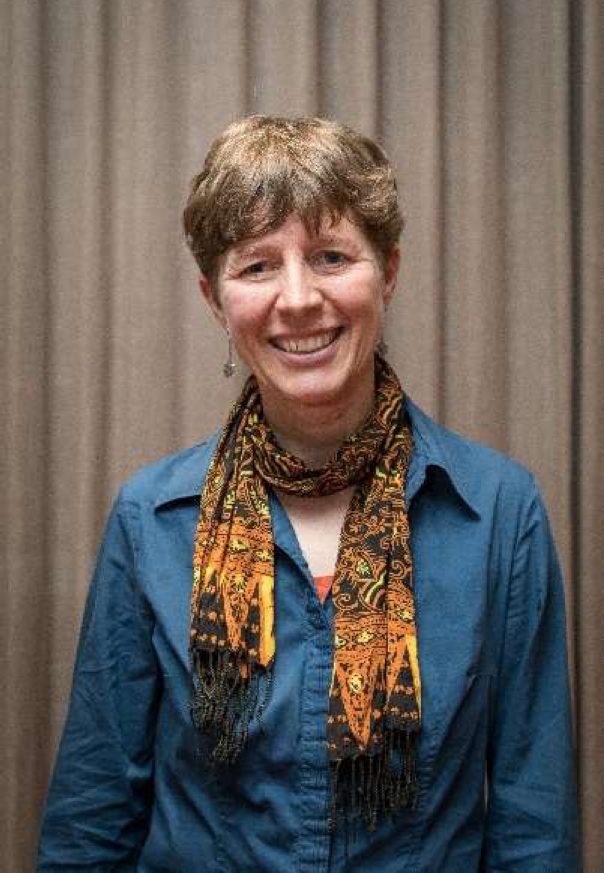
Dirk Durinck
McKinsey & Company, Belgium
Dirk Durinck is a Senior Expert at management consulting firm McKinsey & Co. Since 2009, he is working with leading metals companies and institutions globally on their most pressing challenges and opportunities. Given the growing attention on sustainability over the last years, various topics regarding slag and other by-product valorization have increasingly come up. These topics include -not exhaustively- expected shifts in generated volumes, changes in pricing dynamics, impact on specific business cases and potential green business builds. As an educational background, Dirk holds a masters and a PhD in Materials Engineering at KULeuven. Topic of his research was high temperature processing of metallurgical slags.
Global outlook on ferrous slags in the frame of the technology transition and its implication on slags
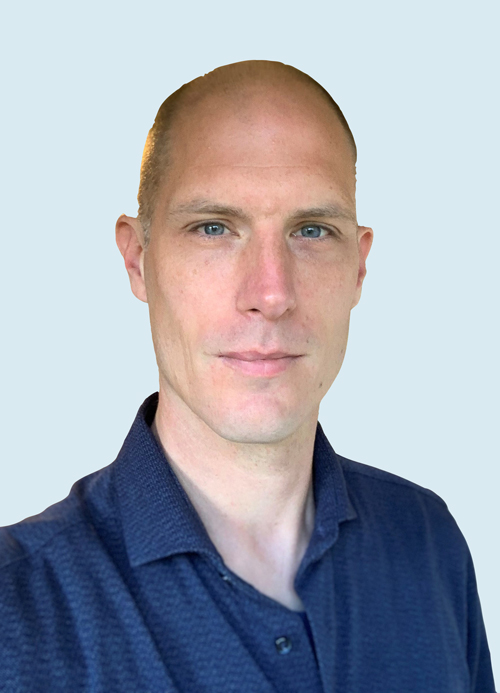
Graham Nathan
Centre for Energy Technology, School of Mechanical Engineering, University of Adelaide, Australia
Gus Nathan is a Professor in Mechanical Engineering at the University of Adelaide, the inaugural Energy Professional of the Year from the Australian Institute of Energy, SA, a Fellow of the Combustion Institute, a recipient of a Discovery Outstanding Researcher Award from the Australian Research Council and an ATSE KH Sutherland medallist. He was the bid leader for, and is now the Research Director of, the national Heavy Industry Low-carbon Transition Cooperative Research Centre, the HILT CRC. He has led the development of six technology platforms, three of which are in ongoing commercial use and include a low NOx burner in ongoing use in cement, lime, alumina and iron-pellet industries, while three are currently being upscaled to decarbonise heavy industry. He has worked closely with industry throughout his career and is the founding chair of the international High Temperature Minerals Processing (HiTeMP) Forum. He has published some 330 papers in international journals, 250 in peer reviewed conferences, 50 commissioned reports and 17 patents.
New opportunities for the circular economy arising from emerging high temperature net-zero processing pathways
The need to decarbonise high temperature processes used to produce materials such as steel, cement and alumina, is generating new opportunities to modify the processing pathway and also increase recovery of materials previously treated as residues. These opportunities span the thermal pre-treatment of ores to increase cracking along grain boundaries and increase recovery of co-products while reducing grinding energy, to activate serpentine for enhanced mineral carbonation, and dehydroxilation to recover water. Similarly, calcination in steam offers opportunity to recover water, while also enabling CO2 capture for re-use or storage. The presentation will give an overview of such new opportunities emerging from the synergy between these industries as they decarbonise, together with selected examples of specific technology developments in them.
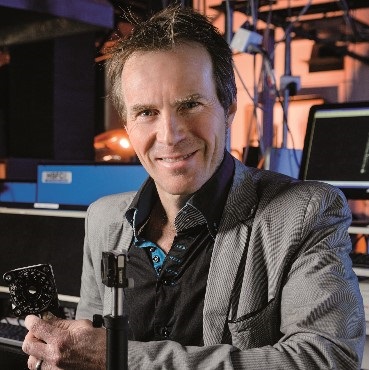
Presentations
Oral presentations
-
Sander Arnout
InsPyro FlashPhos: recovery of elemental phosphorus and synthesis of latent-hydraulic slag from sewage sludge -
Igor Babaian
Pyrometallurgy Innovation Centre Characterisation of Slag Leachability by Experimental and Thermodynamic Modeling Studies in Support of Slag Recycling -
Gert Bolte
HeidelbergCement AG Synergies of steel and cement industry: How to replace declining GBFS quantities by scrap based, engineered EAF-slag -
Simon Blotevogel
Ecocem Materials / LMDC, LabCom Orison Detailed mineralogical characterization and first tests of cementitious reactivity of an electric arc furnace slag -
Zhongfu Cheng
KU Leuven Computational fluid dynamics simulation of hydrogen conversion in the reduction of copper slag -
Zhongfu Cheng
KU Leuven Computational fluid dynamics study on the flow and splashing in the plasma fuming process -
Rensheng Chu
Shougang Group Co., LTD. Research Institute of Technology Fundamental research on recovering metal from hot-dip Zn-Al-Mg dross by supergravity separation -
Anthony de Schutter
KU Leuven Enhancing the carbonation of industrial steel slags through concurrent wet milling -
Rob Dekkers
ROCKWOOL Screening of reclaimed mineral wool by using handheld XRF spectrometer -
Christian Dertmann
IME - RWTH Aachen University Novel Approach for Hydrometallurgical Nb/Ta Recovery from Tin Slags -
Klaus Doschek-Held
Austrian Recycling of metallurgical residues by chemical modification, carbothermic reduction and phase modification -
Andreas Ehrenberg
FEhS - Institut für Baustoff-Forschung e.V. The steel production transformation process - Consequences for the slag utilization -
Hamada Elsayed
University of Padova, Dept. of Industrial Engineering Engineering of mixtures of inorganic waste for sustainable structural and functional materials -
Vojtech Ettler
Charles University, Faculty of Science Gallium and germanium in metallurgical slags: mineralogy, extraction and potential recovery -
Georgia Flesoura
National Technical University of Athens Valorisation possibilities of calcium aluminate slags produced from bauxite residue -
Christoph Gatschlhofer
Montanuniversität Leoben, Austria Influence of iron, chromium, and manganese on the behaviour of phosphorus during carbo thermal reduction of synthetically produced slag-samples in a graphite bed -
Eetu-Pekka Heikkinen
University of Oulu Influence of slag basicity and cooling rate on the structure of EAF steelmaking slags -
Nobumitsu Hirai
National Institute of Technology (KOSEN), Suzuka College Biofilm formed on steelmaking slag in seawater environment -
Takeru Hoshino
JFE Steel Corporation Properties of Iron and Steel Slag Cast Matrix as an Alternative to Iron and Steel Slag Hydrated Matrix -
Gunnar Hovestadt
IME RWTH Aachen Fuming process of slags by hydrogen injection -
Niels Hulsbosch
Belgian Building Research Institute (WTCB-CSTC-BBRI) Validation of secondary aggregate and alkali-activated concrete technologies available in Belgium. -
Leif Hunsbedt
Eramet Norway AS Silica Green Stone – a new pozzolanic material -
Takayuki Iwama
Tohoku University Separation of Phosphorus from Steelmaking Slag by Selective Leaching -
Evgueni Jak
Pyrometallurgy Innovation Centre Integrated Experimental Phase Equilibria and Thermodynamic Modelling Research and Implementation for Sustainable Materials Processing and Recycling -
Judit Kaknics
ArcelorMittal Global R&D New Activation Routes for Early Strength Development of Granulated Blast Furnace Slag -
Shohei Koizumi
Advanced Technology Research Laboratories, Nippon Steel Corporation Steelmaking Slag for Fertilizer Usage -
Konstantina Koukouza
KU Leuven Solidification of Fe-rich slags and the impact on leaching -
Ritesh Kumar
Tata Steel Limited Sustainable use of Steel Slag in National Highways -
Marcel Laabs
University of Kassel Simultaneous utilization of municipal solid waste incineration ash/slag as binder and aggregate substitute -
Kentaro Maeda
Kobe Steel Improvement of steam aging of steelmaking slag by forming highly permeable layer in slag bed -
Irmtraud Marschall
K1-MET GmbH and Montanuniversitaet Leoben Characterization of ladle slag with regard to its use as a substitute for blast furnace slag in cements -
Karen Miya
Advanced Technology Research Laboratories, Nippon Steel Corporation Creating blue carbon ecosystem using steelmaking slag fertilizers for marine and acquisition of blue carbon credits -
Moumita Nag
Tata Steel Ltd A comprehensive study of using fine LD slag in Fly ash brick to maximise value utilisation as a sustainable raw material for brick manufacturing application -
Thi Nhan Nguyen
Department of materials engineering, KU Leuven Permeability and sorptivity of alkali activated Fe-rich slag mortars -
Rui Novais
University of Aveiro Red mud-based geopolymer spherical aggregates: novel strategy to produce lightweight materials -
Tandré Oey
VTT Teknologian Tutkimuskeskus Oy Influence of composition and cooling rate on the reactivity and performance of novel steel slags as cement replacements -
Fábio Oliveira
KU Leuven Processing Parameters and Their Impact on BR-based Autoclaved Dense Monoliths -
Ganesh Pilla
Ku Leuven Recovery of Fe, Al, and Na during the low-temperature reduction of bauxite residue with varying contents of H2 -
Marko Ranneberg
BGR-Geozentrum Hannover Evaluation of Li and Mn influence on Al-Ca-Si-O slag system regarding pyrometallurgical LIBs treatment -
Joao Rezende
GTT Technologies State-of-the-art thermochemical and thermophysical modelling of slags -
Debadri Som
KU Leuven Screening strategy for Fe-rich slag-based mortars -
Christin Stallmeister
IME Process Metallurgy and Metal Recycling, Insitute of RWTH Aachen University, Intzestraße 3, 52056 Aachen, Germany Slag Design for Pyrometallurgical Metal Recycling and Targeted Lithium Slagging from Lithium-Ion Batteries -
Masanori Suzuki
Graduate School of Engineering, Osaka University Trial of Phosphorus Extraction from Steelmaking Slag as Hydroxyapatite Precipitate by One-pot Hydrothermal Reaction -
Yao-Hung Tseng
New Materials Research and Development Department, China Steel Corporation The study of molten BOF slag modification and stabilization technology by oxygen blowing treatment -
Yu-ichi Uchida
Nippon Institute of Technology Phenomenological Study on Separation Behaviour of Phosphate-concentrated Phase in Oxide Melt for Phosphorus Recovery from Dephosphorization Slag -
Joao Weiss
IME RWTH Aachen Assessing the crystallization and segregation of Ta-rich mineral phases in WEEE pyrometallurgical recycling -
Nana Wen
KU Leuven Are Fe-rich alkali-activated materials resistant to sulfate salts? -
Alexander Wetzel
Department of Structural materials and Construction Chemistry High performance lightweight concrete based on alkali activated slag as aluminium casting mould -
Ziyou Yu
KU Leuven Challenges and opportunities from NMR characterization of alkali-activated materials -
Samantha Yvars
Eindhoven University of Technology Influence of limestone filler on the reactivity of C2S in a Basic Oxygen Furnace slag activated binder -
Jonathan Zepper
Eindhoven University of Technology Quality Assurance of Processed BOF slag: A case study
Poster presentations
-
Somnath Basu
Metallurgical Engineering & Materials Science Department, Indian Institute of Technology Influence of metal ion leaching on remediation of arsenic-contaminated water using -
Glenn Beersaerts
KU Leuven The optimum fineness of an Fe-rich slag as a precursor for castable alkali-activated mortars -
Glenn Beersaerts
KU Leuven Modifying the CaO, Al2O3, MgO and amorphous content from an industrial slag to investigate its effect on the reactivity for alkali-activated materials -
Danting Chen
University College London Characterisation of Zn and Pb in Pb/Zn smelter slags including results from X-ray absorption spectroscopy -
Rania Derouiche
Vrije Universiteit Brussel Effect of retarders on the properties of copper slag based phosphate cementitious materials -
Isabella Lancellotti
Department of Engineering ‘Enzo Ferrari’, University of Modena and Reggio Emilia Alkali Activation of Metallurgical Slags: Reactivity in NaOH solution -
Guillermo Meza Hernandez
Vrije Universiteit Brussel Influence of the curing conditions on the mechanical properties of alkali activated copper slag-basalt based thin composites. -
Arne Peys
VITO ENICON matrix valorisation: towards near-zero waste in Europe’s Ni/Co supply chain -
Yufeng Tian
The State Key Laboratory of Refractories and Metallurgy, Wuhan University of Science and Technology Thermodynamics and kinetics of hot state modification of BOF slag by adding SiO2 -
Ladji Tikana
International Copper Association The environmental and economic opportunities from using iron silicate in construction -
Jorn Van De Sande
Vrije Universiteit Brussel Influence of MgO on the thermal stability of Fe-rich alkali-activated materials
Topics
- Fundamental studies on liquid and solid slags
Research focusing on the physical, chemical, thermodynamic and structure properties of liquid and solid slags, such as viscosity, phase equilibria, interfacial properties, polymerisation degree, interactions between minerals and gels... It considers both experimental and characterisation studies, calculations and (nano-scale) modelling work.
- Hot-stage slag engineering, slag solidification, slag conditioning, internal reuse
Research focusing on:
- The hot-stage engineering of slags and the solidification procedures with the aim to improve the slag valorisation opportunities. It includes lab or pilot scale studies dealing with the effect of additions at high temperature and/or of the cooling procedures on the properties of the liquid and/or solid slag. Studies dealing with the mineralogy and leaching behaviour of the slag are included in this.
- Phenomena and reactions during weathering of metallurgical slags, and the effect of weathering and the weathering conditions on the slag properties and the slag valorisation opportunities.
- The recycling of slag within metallurgical plants and the evaluation of this procedure.
- Slag cleaning and metal recovery
Research focussing on:
- Clean slag production for added-value application of metallurgical slags and/or other industrial residues. This includes slag design for zero waste metallurgy, deep reduction of ferrous and non-ferrous slags, plasma fuming, removal of harmful component from slags.
- Recovery of base metals, rare earth and precious metals from industrial wastes and/or secondary resources. In particular, research that highlights metal recovery through both metallurgical processes (e.g. pyro-, hydro- and electro-metallurgy), and mineral processing (e.g. magnetic separation, gravity separation, flotation separation)
- Production, properties and performance of slag-based products
Research focusing on the conception, development, optimisation or understanding of innovative production processes that promote slag valorisation and the generation of slag-based products. It also includes studies addressing the effect of the production process on the desired properties of existing products or the evaluation of their performance at any stage of development.
- Process development for sustainable technologies
Research on slags compatible with the UN Sustainable Development Goals No. 12 (“Ensure sustainable consumption and production patterns) and 13 (“Take urgent action to combat climate change and its impacts”) and/or the European Green Deal. In particular, research that promotes and emphasises novel ideas and/or technologies focusing on sustainable slag management, lower carbon emissions, and more efficient use of resources.
- Industrial case studies on slag/residue valorisation
Research at pilot-plant or industrial level (Technology readiness level 5 or higher) that aims at upscaling, implementing, and/or optimising slag valorisation. Pre-and feasibility studies highlighting evaluation from a technical perspective are also welcome, as well as technical reports of lessons learned from full-scale implementations.
- Environmental and economic analysis
Research which focuses on environmental and economic analysis of slag valorisation, metals and heat recovery. In particular, studies that use life cycle assessment, life cycle costing, cost-benefits analysis and other assessment tools to evaluate the environmental and economic trade-off the costs of the recycling processes and the benefits of materials and energy recovery.
- Policy and regulations
Research focusing on how policy and regulation can boost for valorisation of slag and other residues from high-temperature processes. It includes studies from public bodies or private sector, using real case studies or prediction models to analyses the consequences of policy and regulations on the environmental performance of high-temperature industry.